When was the last time you had a conversation like this?
Your teammate, "Hey, how’s your day looking"
You, "Ah, not great–I’m in back-to-backs all day"
We're willing to guess this situation might look familiar. Back-to-back meetings have crept their way into modern work, taking over our calendars and making them look like a game of tetris.
It's not possible to abandon meetings altogether–sometimes if you can’t beat them, you have to join them. But, that doesn’t mean you can’t leverage tools to make it easier for you to stay organized and be successful, despite a filled up calendar. When approached in an intentional way, meetings can be productive and energizing. And dare we say it, something to look forward to.
There are many ways to stay organized in back to back meetings. From tactics you can implement before the meeting begins to ways to stay on top of things as your meetings go along and post-meeting habits. We’ll explore all of these and everything in between.
Leave a buffer between meetings
One way to set yourself up for success is how you schedule your meetings. If packing meetings in tight succession is unavoidable, use the 20 or 50-minute model for meeting scheduling instead. This is when you schedule a meeting that would normally be 30 minutes for only 20, and 60 minutes for only 50. Leaving you that precious spare ten minutes to grab a snack, refill your water, or other necessities. Creating an extra ten-minutes between meetings will also help you be on time. Arriving on time can help you leave on time. Every minute counts!
The trick is to actually stick to the meeting time. Setting boundaries around when a meeting ends is crucial. Unfortunately, being late to and going overtime in meetings is common. Practice and get comfortable with acknowledging that the end of the meeting is approaching and letting the attendees know you’ll be hopping off right at the end time.
Without boundaries, you'll find it difficult to take advantage of those ten-minute breaks. Communication is key to overcoming that. We know it’s awkward, but once you’ve practiced it for a while, it’ll feel easy and your team will come to accept it.
Choose a meeting facilitator and get clear on responsibilities
Before setting a meeting, identify who the facilitator or leader will be. If you set the meeting, you’re probably the facilitator. In recurring meetings, you might want to rotate the facilitator to keep things fresh and balance the workload.
Common meeting facilitator duties:
- Create and finalize the meeting agenda.
- Confirm attendees.
- Share prep-work or pre-reading.
- Keep the meeting on track, with an appropriate amount of time on each topic.
- Define next steps and action items.
Facilitators help meetings run smoothly. Smooth meetings make back-to-backs more manageable and enjoyable.
Create a meeting agenda
An agenda is your secret weapon to a well-run meeting. It helps the meeting stay on-topic, allows multiple contributors to bring their items to the table, and provides a template for note taking.
Depending on your company culture, agendas might not be used. It’s easier to guarantee a quality agenda when you can do it yourself as the facilitator. If you work for an org that doesn't prioritize agendas, your colleagues will be used to taking meetings on a whim so they’ll probably need a few reminders and instructions.
If you’re not facilitating the meeting, ask the facilitator to put together an agenda. Frame the ask by letting them know that an agenda will help you show up prepared. Offer to send them an example template of a meeting agenda that you find helpful.
As we discussed before, boundaries are important. You might need to start gently telling your colleagues that you won’t attend a meeting unless an agenda is created. While this may seem harsh, it’s a reasonable expectation. If your day is booked back-to-back, you can’t afford to lose time to a meeting where you don’t even know if you have anything valuable to add or gain.
Consider the best meeting format
Not every meeting is created equal. Some meetings’ format can’t be changed, like daily standup or one-on-ones. But for other meetings where the format could be more flexible, think about how to maximize the time to get the most out of the meeting.
Meetings that are focused on reviewing and discussing are great for the silent meetings format. Silent meetings help keep discussion and problem solving time-boxed within the meeting. In our recent post on silent meetings, we dove into how to structure a silent meeting:
"Despite their name, silent meetings aren’t 100% silent. Most silent meetings aim to be about 30-60% silent, depending on the purpose of the meeting.
A silent meeting is broken into 2 main parts:
- The silent portion: Everyone reviews the document (e.g. Figma File, project brief, strategic planning document, etc.) silently on their own, asking questions or leaving comments on a platform, like Slack, Google Docs or Stashpad.
- The discussion portion: The facilitator groups the questions and comments into common threads for the team to discuss live after everyone has reviewed the document and the other comments their teammates have left on it. The discussion only begins after everyone has reviewed the document and read the comments/questions left by their peers."
Because silent meetings work off a central collaborative doc, comments/feedback from the meeting are automatically captured within that doc. This takes pressure off of remembering everything that was discussed and spending time on notes. A game-changer when you’re stuck in meetings all day.
Keep time
Keeping time during a meeting can be the difference between staying on track or not. It’s easy to go on a tangent when meeting synchronously. Before you know it, 20 minutes have passed and you haven’t discussed anything relevant to the initial purpose of the meeting.
Your goal is to work through each agenda item and either make a decision or "park" the discussion to be further explored either in another meeting, in a document, or async. It can be frustrating for attendees if their item is last on the list and doesn’t get discussed because others went overtime.
Creating ‘time buckets’ for each agenda item and assigning someone to keep time will hold your meeting accountable. You can even have the timekeeper put a half-way and 2-minutes left reminder in the meeting chat, so you don’t have to abruptly cut people off when it’s time to move on.
Use a parking lot
Don’t get us wrong–tangents in meetings can produce some pretty awesome ideas.
We briefly mentioned the idea of ‘parking’ a topic when you have to move on during a meeting, but still need more opportunity to work through a point. A ‘parking lot’ is a doc where you keep a running list of topics that don’t directly pertain to the meeting at hand, but deserve more exploration outside of the meeting. The appropriate person can action the parking lot item and have the team pick up where the meeting left off.
Use a collaborative doc to keep notes
With not much time between meetings, you need to maximize your ability to take notes and create documentation throughout the meeting. Using a collaborative docs app without fussy formatting can make it simpler to take organized, coherent notes as you go.
Markdown editing is a great option for taking notes during a meeting, because your fingers never need to leave the keyboard. Create section headings, to-do lists, and tag people without distracting clicks.
Not sure how to write in Markdown? Take this free 1-week Tiny Markdown Course
An app like Stashpad Docs can help you easily create and share your meeting agenda and notes with others on the fly.
Save time to recap
Taking time to recap can save you a headache in the long run. There are two key moments to pause, recap, and jot down notes:
- At the end of the meeting try to reserve 5 minutes to review the meeting highlights with your meeting attendees. Ensure the meeting and its takeaways are accurately represented. Do this in a collaborative doc so everyone can work together to make the meeting notes accurate and helpful. Then, make sure these notes are linked to the meeting invite so they’re easy to revisit.
- At the end of your day, reserve time for an additional 10-15 minutes to review all your meeting notes and ensure nothing is missing. It’s a good time to also take down personal notes and conclusions and create reminders for any follow ups you might need to do the next day. After a long day of meetings, your brain is going to be tired. It’s wise to take a bit of time to capture final thoughts before logging off and them leaving your memory for good
We hope these tips will help you better tackle your next day of back-to-back meetings. Don’t forget to always ask yourself, "does this have to be a meeting?" Push for async collaborative work wherever possible to get more focus, high-value time back in your day.


